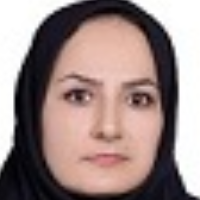Investigation of groundwater status of Hengam plain using quantitative and qualitative models (MODFLOW and MT3DMS)
The primary source of water supply in Dasht-e Hengam is groundwater; therefore, it is necessary to study the qualitative and quantitative status of groundwater resources in this area due to its high agricultural use. Groundwater researchers have used mathematical models, MODFLOW and MT3DMS, to simulate groundwater and evaluate their efficiency (Sadeghi Goghari, 2013; Paliz, 2014; Yousefi et al., 2014; Abbasi, 2014).Simulation of groundwater resources shows that droughts and wetlands have little effect on groundwater in Sarvestan plain (Torshizi et al., 2015), and the main reason for declining aquifers Is the uncontrolled extraction of wells from the groundwater aquifer (Torshizi et al., 2015; Jabbari et al., 2015; Runama and Jafari, 2017). In addition, the level of pollution has increased in some plains (Deymehkar, 2016; Fasihi and Zare Abyaneh, 2018; Shahnavaz, 2019). For improving the quality of aquifers, aquifer feeding (Ghafari et al., 2020), a suitable hydraulic system (Ghafari et al., 2020), and (or) reactive-nano-iron barriers have been used (Divya et al., 2020).In this research, with the help of two powerful specialized tools of water resources, MODFLOW and MT3DMS particle transfer model, the plain aquifer during the simulation and the quantitative and qualitative status of groundwater is investigated.
Dasht-e Hengam, with approximately 525 square kilometers, is located in 76 kilometers of Qirokarzin city and 220 kilometers south of Shiraz city. Geological conditions, alluvial sediment status, location of available groundwater resources, and observation wells are plain alluvial aquifers (Regional Water Company of Fars, 2012). Fig. 1 shows the geographical location of Hengam Plain (Regional Water Company of Fars, 2012), and Table 1 shows the monthly distribution of rainfall in the plain. Data from ten observation wells in the groundwater aquifer, Fig. 2, were used to calibrate quantitative and qualitative models of the plain. The amount of feed from the surface includes returned water from agricultural and drinking wells, from the river (runoff), drainage, annual rainfall at the aquifer level, and sewage, the information of which is listed in (Regional Water Company of Fars, 2012). Piezometers per month were first interpolated in GIS software and then transferred to the model. The model network cell size for all possible observation wells in the area with a cell size of 150 m was considered. A series of pilot points (Figure 3) were designed at the range level for more accurate and faster calibration.
By calibrating the model over 36 months, the optimal hydraulic conductivity value with an average of 17.3 and a standard deviation of 24.9 m/day was obtained (Fig. 5). The highest hydraulic conductivity coefficient is related to the northern and northwestern parts of the plain, and the lowest coefficient occurs at the highest accumulation of exploitation wells. Also, the amount of specific storativity varies between 0.00167 and 0.636, with an average of 0.103 and a standard deviation of 0.117.The slight difference between the computational and observational data, Fig. 6 to Fig. 9, indicates desired modeling in the scope of the study. The correlation between computational and observational values (Fig. 10, typically shown for the simulation month 60) also shows this.The quantitative model, MODFLOW, shows that the aquifer volume decreases daily during the 36-month modeling period (Fig. 11 and Fig. 12); as a result, the amount of groundwater discharge from the boundary of the plain vanishes due to falling groundwater levels. Also, the volume of groundwater inflow is about 24.4 Mm3/year, the recharge into the aquifer from the surface is approximately 10.97 Mm3/year, discharge from alluvial groundwater and complex formation (often wells) is about 39.43 Mm3/year, and the volume of output due to natural drainage is almost 0.546 Mm3/year. The aquifer storage volume is 12.1, and the reservoir withdrawal volume is about 13.5 Mm3/year (Fig. 13); thus, the reservoir deficit is 1.36 Mm3/year.Fig. 14 shows the groundwater level of the Hengam aquifer in the last step of the 36 months, which, compared to the beginning of the period, indicates a drop in water after three years of groundwater abstraction. Fig. 15 shows that the water level decreased by about 4.5 m during the simulation period, equivalent to an average annual drop of about 1.5 m.MT3DMS package and chemical quality data related to 10 agricultural wells were used to prepare a qualitative model. Information about the location of sampling wells and initial concentration of qualitative parameters in the aquifer in Table 4 and the calibrated value of qualitative parameters are presented in Table 5 for the last calibration step. The distribution of TDS in Figures 19 to 21 shows that the contamination is constantly expanding during these three years, and Fig. 22 shows that as the groundwater level decreases, the TDS contamination increases during the simulation period.
In this study, using MODFLOW and MT3DMS, the quantitative and qualitative status of Hengam plain was investigated. The groundwater flow model created the slightest statistical deviation on the optimization parameters according to the automated calibration and validation approach. The results showed the nonlinear trend of groundwater level sagging with the final year conditions in an optimistic manner.
Groundwater , Hengam Plain , Simulation , GIS , MODFLOW , MT3DMS
-
Multi-objective energy consumption optimization in a pumping station using a hybrid model based on the grey wolf algorithm and vector regression.
Mohsen Nouri, , Jamshid Piri *
Journal of Hydraulics, -
Two-dimensional modeling of groundwater flow using a Meshless Local Petrov-Galerkin method based on RBF radial function (Case study: Rafsanjan plain)
Samira Zeinaddini Meimand, *, Seyed Arman Hashemi Monfared, Rasoul Memarzadeh
Iranian Journal of Irrigation & Drainage,



